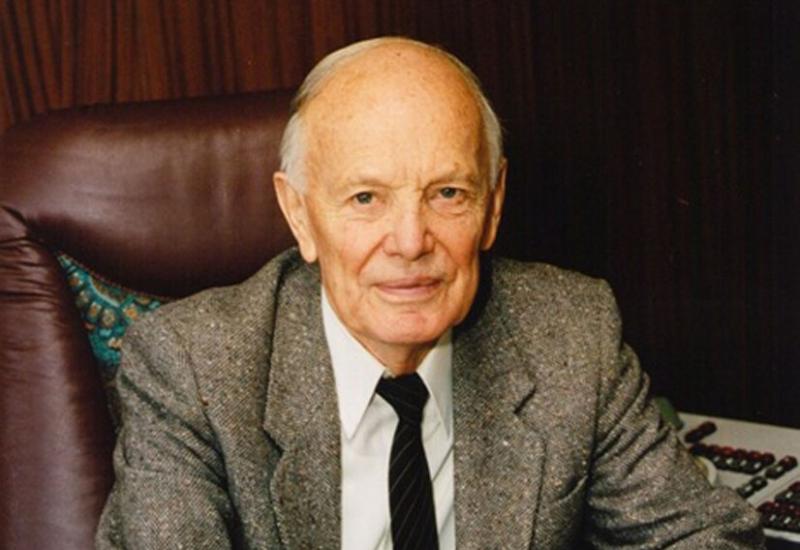World-renowned scientist, outstanding organizer of science, talented engineer, genius of electric welding Borys Eugenovych Paton parted from this life in the 102 year. It is impossible to overemphasize Borys Paton’s contribution to world scientific and technological progress. His death is a great loss for the entire scientific community of the world. Igor Sikorsky KPI will always be proud of its outstanding polytechnics – Borys Paton, his brother Volodymyr and their famous father Eugene Oscarovych Paton.
The Paton family opens, perhaps, the most glorious page in the history of the Kyiv Polytechnic Institute.
It began in 1904, when Kostiantyn Oleksandrovych Zvorykin, Director of Emperor Alexander II Kyiv Polytechnic Institute, invited a young professor of the “Imperial Moscow Engineering School of Railways” Eugene Oskarovych Paton to work at KPI.
At that time, Eugene Oskarovych was already a well-known bridge builder, the author of the famous two-volume “Iron Bridges”, had the rank of a collegiate counsellor, was awarded the Order of St. Anna 3rd class “as a reward for performing feats in the field of public service”.
The decision to move to Kyiv was fateful both for the Paton family and for Ukrainian industry, science and education. Eugene Oskarovych’s gift to combine the qualities of organizer, scientist and teacher played a decisive role in the further fate of KPI. His system of training engineers of a new type, which was based on the triad “Science – Production – Staff!”, brought KPI to the level of leading universities in the Russian Empire. In Soviet times, this model of elite engineering education was called physical and technical. Throughout its history, the KPI has retained this Paton model as a defining one, and it remains so to this day.
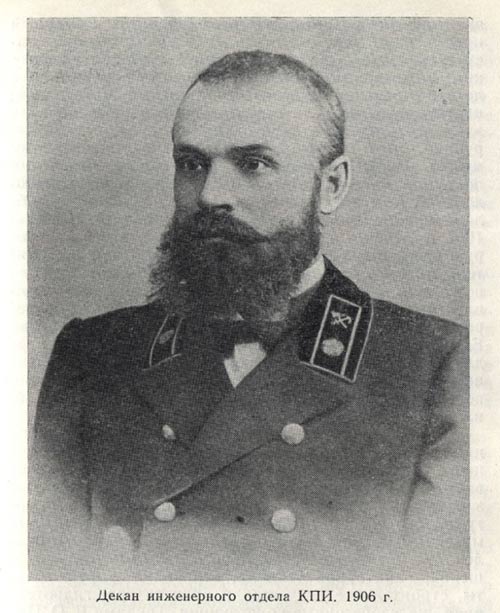
At the beginning of his work at KPI, Eugene Oskarovych was struck by the so-called “speculative teaching”, when students were explained everything in words, without showing objects. For this reason, when Eugene Oskarovych was elected the Dean of the Engineering Department in October 1906, he used best endeavors to open new laboratories, equip classrooms with visual aids, and invite famous professors and scientists. And as early as next 1907 year there were 6 specializations at the Engineering Department: architecture, hydraulic engineering, railways, bridges, sanitary engineering, territorial and urban economy.
A special great merit of Eugene Oskarovych Paton was the foundation and further development of the KPI Engineering Museum, the prototype of the current State Polytechnic Museum of Ukraine. He managed the Engineering Museum for seven years – from 1905 to 1912. It was Eugene Oskarovych who developed the catalog of exhibits that became the possessions of the Museum. They were 1200 at that time. On his initiative, the Museum was organically integrated into the educational process. At lectures, professors used models and samples to clearly explain to students the complex connections, notches, nodes and various structural parts. And students had the opportunity to proactively learn complex structures while studying special courses and performing course projects and tasks.
A unique exposition of wooden bridges, made at scale 0.5 to 0.75 of full size, was placed in the Engineering Museum for visual demonstration of bridge construction. The exposition was so interesting and useful that the Moscow Institute of Railway Engineers ordered a set of such models, which were made for it in the Mechanical Workshops of KPI.
The Engineering Museum became the basis for creation of new training and auxiliary subdivisions of the KPI: bridge research station, model room and architecture department at the museum.
Furthermore, the cabinet of bridges was opened in KPI, on the initiative of Eugene Oskarovych Paton, in order to develop new engineering solutions and execute projects premised on them. In 1930, the cabinet of bridges, to which Eugene Oskarovych dedicated 26 years, was transferred to the Dnipropetrovsk Institute of Railway Engineers while its hiving-off from the KPI.
In 1906-1907 Eugene Oskarovych Paton published the third and fourth volumes of the course “Iron Bridges”, in 1910 – “Wooden Bridges”. At the same time, Eugene Oskarovych was one of the first bridge builders in the Russian Empire, who began to involve students in the design of real constructions. The most known projects of that time, on which Eugene Oskarovych brought up a whole galaxy of future bridge builders from students, were the project of the well-known pedestrian bridge across the Petrovska Alley in Kyiv, built in 1909-1910, and the Mukhran Bridge over the Kura River in Tiflis, built in 1911.
On April 14, 1913, Eugene Oskarovych Paton was awarded the Imperial Order of the Holy Apostolic Prince Volodymyr 4th class. This order was awarded to people who became known in the field of education and in recognition of the 300th anniversary of the Romanov Imperial Family.
During the First World War, Eugene Oskarovych managed the work to provide the army with technical means for moving across water obstacles, in particular, he solved the problem of rapid replacement of destroyed bridges. Little is known about the fact that Eugene Oskarovych organized a private hospital in the estate of his older brother Mykhaylo, where servicemen received free treatment after being wounded. In between lectures, he visited Kyiv hospitals, talked to doctors, and compiled lists of the wounded to send them to his brother in the Nova Utitsa estate.
During the revolution of 1917 and the civil war, the educational process at the KPI one day stopped, another day resumed, the number of students and professors was halved, and their material conditions approached a critical limit. To preserve the Institute, Eugene Oskarovych organized a survival committee, that arranged a supply of products from rural areas and provided assistance to those who desperately needed it. As a result, KPI professors and students and their families could survive those terrible hardships.
Despite the incredible difficulties of that time, Eugene Oskarovych did not stop his life-work – construction of bridges. In 1920 he headed the work on design and construction of the Eugenia Bosch pendant beam bridge in the place of the Nikolaev Chain Bridge destroyed by the Poles; the new bridge was brought into service on May 10, 1925.
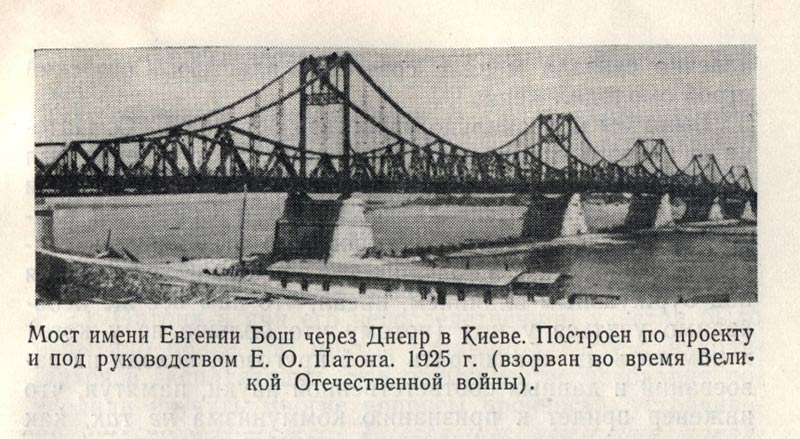
In September 1921, on the occasion of Eugene Paton’s 25-year teaching activity, the Council of the KPI Mechanical Faculty organized the bridge research station named after him. The station was intended for educational and methodical work and gave students the opportunity to participate in testing bridges in practice.
In general, together with KPI students and scientists, and confirming his motto “Science – Production – Staff”, Eugene Oskarovych Paton created more than 35 bridge projects, most of which were implemented.
In 1928, Eugene Oskarovych cardinally changed his focus area. He came to the conclusion that great success had been achieved in the design of bridges, but the process of making them was too laborious; and to simplify it he proposed to use the electric welding method. This branch was just beginning to develop on the basis of the idea of electric arc welding by Nicolas Benardos. But in Paton’s vision, it was to become fundamentally interdisciplinary engineering branch, based on physics, mathematics, mechanics, metallurgy, electrical engineering, and the science of materials. The new matter became the subject of Eugene Oskarovych’s special admiration.
In 1929, the Kyiv Polytechnic Institute nominated its professor for election as a member of the All-Ukrainian Academy of Sciences. The first important task of Academician Eugene Paton was the establishment of a section of materials science within the system of the Academy of Sciences. Heading this section, during several years he focused on the materials science as a strategic sphere for Ukrainian science.
Always keeping faith with bridge construction, Eugene Oskarovych completely devoted himself to the establishment of welding scientific school. The new industry required the training of respective engineering staff. Therefore, in 1935, being Director of the Institute of Electric Welding of the All-Ukrainian Academy of Sciences, Eugene Paton organized a Department of welding production at the KPI Mechanical Faculty, and became its first head. Leading professors of this Department, as well as Paton himself, at the same time worked as researchers at the Institute of Electric Welding. The scientific school “Physicochemical and thermo-deformation basics of welding and related processes” that was founded by Eugene Oskarovych, today continues to be a leading scientific school of the KPI welding production Department.
Eugene Paton’s next task was to establish the KPI Welding Faculty in 1948 as a unique school for training of engineers based on the general scientific foundations of mathematics, mechanics, physics, metallurgy, materials science, and electrical engineering.
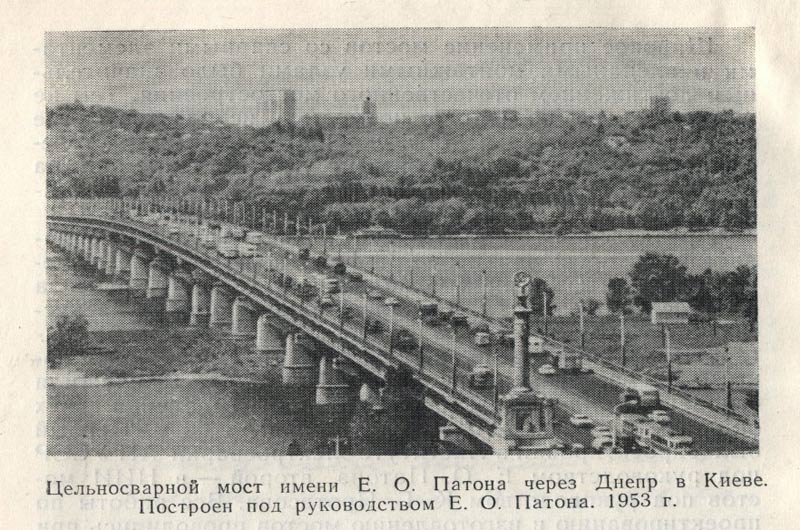
For 72 years, the KPI Welding Faculty has become a real center of training and retraining highly qualified welding engineers. More than 6,500 engineers left its ranks, 55 Faculty graduates became Doctors of Sciences, 160 – PhD, 7 – Academicians of the National Academy of Sciences of Ukraine. These are academicians Igor Kostiantynovych Pokhodnya, Borys Izrailevych Medovar, Sergiy Ivanovych Kuchuk-Yatsenko, Kostiantyn Andriyovych Yushchenko, Georgiy Mykhaylovych Grygorenko, Volodymyr Arsenovych Makara.
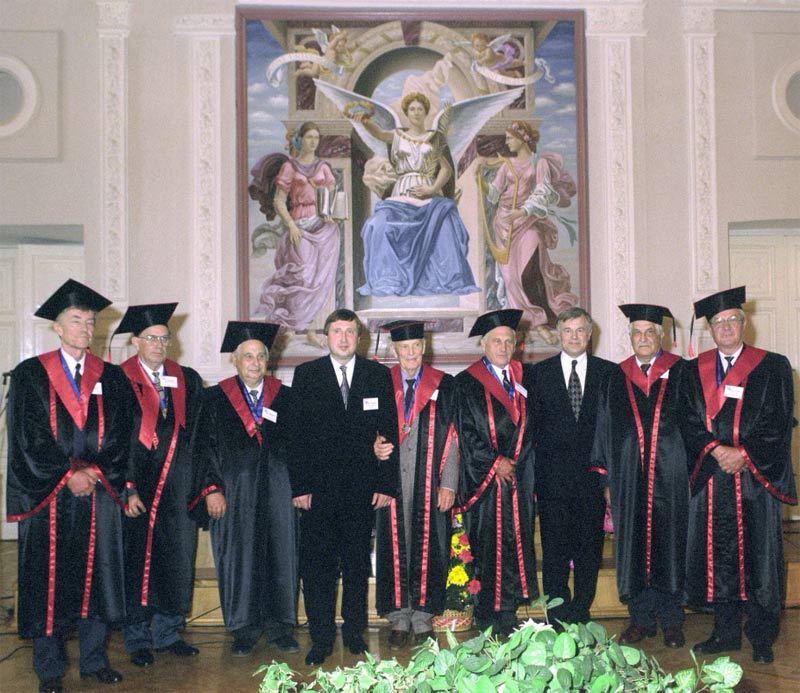
Eugene Oskarovych set up the tradition of the Paton dynasty – comprehensive assistance in the KPI development. On the initiative of the eldest son, the designer of welding equipment Volodymyr Eugenovych Paton, the Department of electric welding installations was created in KPI in 1978. For the next 7 years, Volodymyr Eugenovych was engaged in practical training of students, headed the State Examination Commission of the Department; he was a mentor for many of his graduates.
The destiny of Eugene Oskarovych’s youngest son, Borys Eugenovych Paton, has been linked with the KPI since the first days of his life. He was born in the professor's apartment of the Patons on the territory of the KPI, was baptized in the University Church of St. Mary Magdalene, spent his childhood in the institutional environment. Borys Eugenovych graduated from the KPI Electrical Engineering Faculty in the heavy June days of 1941. And he defended his PhD thesis at the Academic Council of the same Faculty in the victorious year of 1945.
Borys Eugenovych focused on training specialists of all levels in the field of welding and related processes: welding workers, engineers, PhD and Doctors of Sciences. He established the Welding Coordination Council and headed the training section. It was a system-level work of the national scale.
In 1965, Borys Eugenovych initiated the construction of a new building of the KPI Welding Faculty and its modern instrumentation. Since 1977 the Institute possesses this building, whose specific features are unique research laboratories.
The Faculty of Electric Welding has gained new dynamics over the past twenty years. At the initiative of Borys Eugenovych Paton and with the direct participation of Academicians Yushchenko and Kryvtsun, the latest programs in scientific research and training of highly qualified scientific staff were developed and implemented. The Faculty was accredited by the International Welding Institute as a National Training Institution for training international welding engineers and international welding technologists. Last week, the next, already the twelfth, supervisory audit by the International Welding Institute was successfully passed.
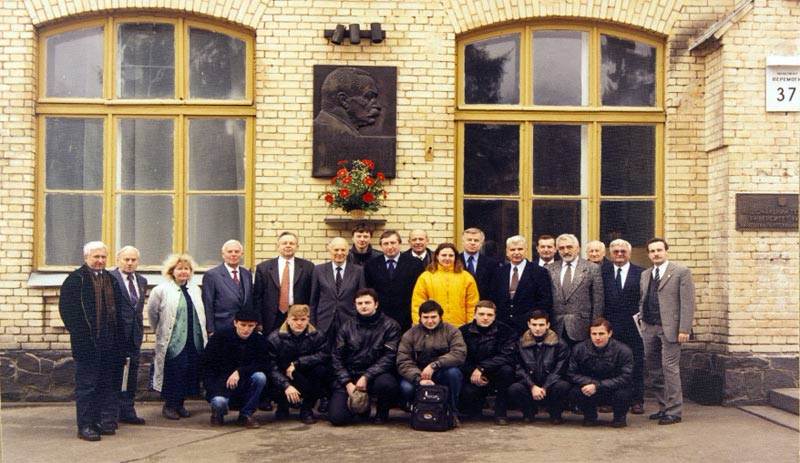
The Faculty signed direct Cooperation Agreements with 12 universities around the world. In particular, double degree programs with Otto von Guericke universities (Germany), the Federal University of Uberlândia (Brazil) and others have become requested. The Faculty of Welding is actively involved in the implementation of projects of the Sino-Ukrainian Institute of Welding. A Coordinating Council of Heads of Departments of Welding and Related Processes was established, with participation of 22 Heads of Departments from different universities of Ukraine.
On February 14, 1995, the Faculty of Physics and Technology dually subordinated to the Ministry of Education of Ukraine and the National Academy of Sciences of Ukraine, was established at the KPI with the support of Borys Eugenovych Paton. In a quarter of a century, more than 2,000 highly qualified engineers graduated from the Faculty, where they were trained in accordance with the Paton model “Science – Production – Staff”, as well as more than 100 PhDs and Doctors of Science.
In July 2019, on the initiative of Borys Eugenovych Paton, the Faculty of Welding and Engineering and Physics Faculty merged into a powerful Institute of Materials Science and Electric Welding of the KPI named after Eugene Oskarovych Paton. Leading scientific institutions of the Department of Physical and Technical Problems of Materials Science of the National Academy of Sciences of Ukraine and large industrial enterprises became partners for the newly established Institute. This scientific and technical cluster opens new horizons for research, training of new generation of specialists and innovative implementation of the latest developments.
Today, the doings of Eugene Oskarovych Paton and his sons Volodymyr Eugenovych and Borys Eugenovych are deeply respected in the KPI. A large exposition in the State Polytechnic Museum is dedicated to their developments. Many generations of engineers, designers and scientists have already been brought up on Patons’ ideas.
In honor of Eugene Oskarovych Paton, a monument by the sculptor Oleksandr Skoblikov was erected in 2002 with the words “I look with hope at our gifted youth” embossed at the pedestal. These words of Eugene Oskarovych turned out to be prophetic. New generations of Kyiv polytechnicians consider it an honor to learn from the example of Patons’ life and work feat, and become successors of their great deeds.
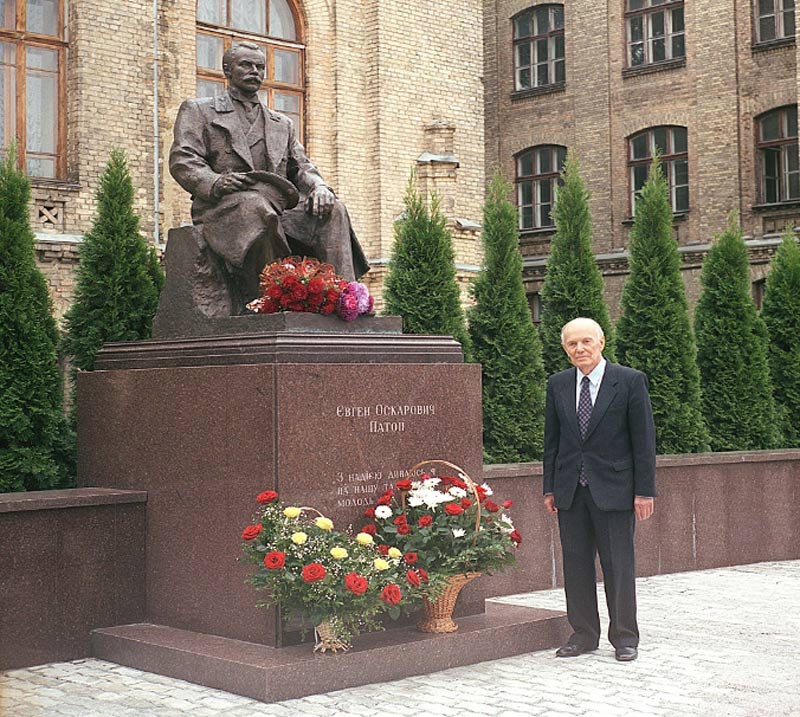
Borys Eugenovych, like his father and elder brother, has lived a dignified, happy life, full of great goals and great deeds. He has left a legacy of invaluable achievements and an example of what a true scientist, patriot, a true citizen of his country should be like. Like his father, Borys Eugenovych will now always look at our gifted youth – with hope and quiet joy from that his deeds continue to live.

